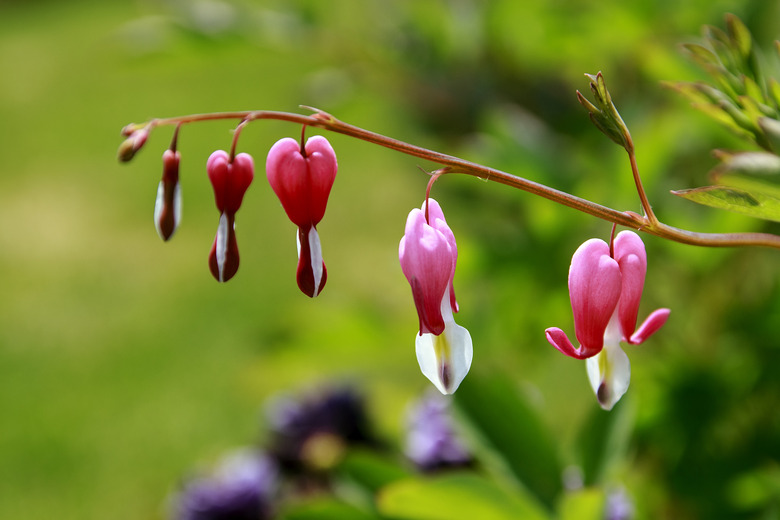How To Transplant A Bleeding Heart Plant
Known for its arching stems and heart-shaped pink and white flowers, the bleeding heart plant (Dicentra spectabilis) is a favorite among gardeners. But they're not always easy to transplant. They dislike having their roots disturbed, so transplanting bleeding hearts requires you to be extra careful to help the plants make it through successfully.
When to Move Bleeding Hearts
When to Move Bleeding Hearts
Bleeding hearts should be moved in the fall after the plants go dormant. Even if the plants lost their leaves in the summer due to lack of water, wait until the fall before moving them. You can also move bleeding hearts in early spring before they start to send up new shoots. Because bleeding hearts are tricky to transplant, you want to get the timing right to help them stay as healthy as possible.
Choosing a Location
Choosing a Location
Before dividing bleeding heart plants and moving them, make sure the new planting area offers ideal growing conditions for the plants. Because these plants don't like being moved, choose the new spot carefully so you won't have to move the bleeding heart again. Bleeding hearts grow best in partial shade locations with well-drained soil that stays moist. They don't like soggy soil, but if the soil is too dry, the plants will die back to the ground in the summer. Bleeding hearts prefer loose soil that's rich in humus and organic matter.
Preparing the Area
Preparing the Area
Make sure the new area is prepared and you've dug a hole for the bleeding heart plant before you start digging it up. You don't want your bleeding heart bush to stay out of the ground after you remove it. Before planting, amend the soil with organic material like well-rotted manure or compost. Spread a 1- to 2-inch layer of the compost or manure over the soil surface in the area where you're going to plant the bleeding heart. Till or dig it into the top 6 to 8 inches of soil.
Transplanting Bleeding Hearts
Transplanting Bleeding Hearts
Bleeding heart plants have thick, fleshy roots that can easily be broken or damaged when transplanting. Keep as much of the plant's roots together as possible in a single ball, and try not to let the clump break when you move it. Start digging 6 to 12 inches out from the base of the plant to make sure you get a large mass of roots.
Plant the bleeding heart flower immediately in its new spot. Make sure you set it in the ground at the same level it was previously growing. If you're moving several bleeding hearts plants, space them 24 to 30 inches apart. Firm the soil around the base of the plant, then water thoroughly. As part of your bleeding heart plant care, continue watering enough to keep the soil moist, but not soggy, for the first couple of weeks after transplanting.
Even though bleeding heart plants can be tricky to transplant, it can be done successfully with a little care. Handle all of the prep work to make the actual transplant process as fast and easy as possible. Then give your plant plenty of attention and care to make sure it stays healthy.
